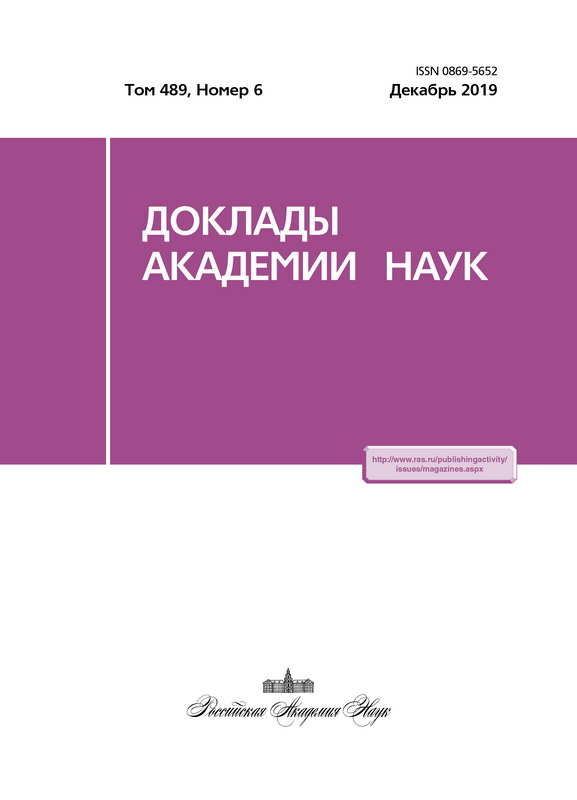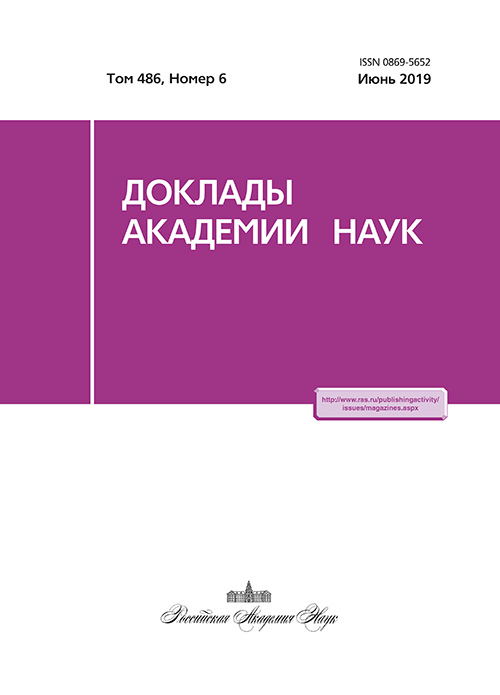Роль мозга в регуляции периферических норадреналин-продуцирующих органов в период морфогенеза у крыс
- Авторы: Муртазина А.Р.1, Никишина Ю.О.1, Дильмухаметова Л.К.1, Сапронова А.Я.1, Угрюмов М.В.1
-
Учреждения:
- Институт биологии развития имени Н.К. Кольцова Российской академии наук
- Выпуск: Том 486, № 6 (2019)
- Страницы: 748-752
- Раздел: Биохимия, биофизика, молекулярная биология
- URL: https://journals.eco-vector.com/0869-5652/article/view/14527
- DOI: https://doi.org/10.31857/S0869-56524866748-752
- ID: 14527
Цитировать
Аннотация
Исследование является одним из фрагментов исследований, направленных на проверку нашей гипотезы о том, что в перинатальном периоде между норадреналин-продуцирующими органами существует взаимная гуморальная регуляция. С этой целью на модели выключения синтеза норадреналина в мозге оценивали экспрессию генов и содержание основных ферментов синтеза норадреналина - тирозингидроксилазы и дофамин-бета-гидроксилазы в периферических норадреналин-продуцирующих органах. Было показано увеличение экспрессии генов тирозингидроксилазы и дофамин-бета-гидроксилазы в надпочечниках. Полученные данные указывают на то, что при выключении синтеза норадреналина в мозге неонатальных крыс компенсаторно повышается синтез норадреналина в надпочечниках, что направлено на поддержание уровня норадреналина в крови и свидетельствует о взаимной гуморальной регуляции этих норадреналин-продуцирующих органов.
Ключевые слова
Об авторах
А. Р. Муртазина
Институт биологии развития имени Н.К. Кольцова Российской академии наук
Email: zubova.y@gmail.com
Россия, 119334, г. Москва, ул. Вавилова, 26.
Ю. О. Никишина
Институт биологии развития имени Н.К. Кольцова Российской академии наук
Автор, ответственный за переписку.
Email: zubova.y@gmail.com
Россия, 119334, г. Москва, ул. Вавилова, 26.
Л. К. Дильмухаметова
Институт биологии развития имени Н.К. Кольцова Российской академии наук
Email: zubova.y@gmail.com
Россия, 119334, г. Москва, ул. Вавилова, 26.
А. Я. Сапронова
Институт биологии развития имени Н.К. Кольцова Российской академии наук
Email: zubova.y@gmail.com
Россия, 119334, г. Москва, ул. Вавилова, 26.
М. В. Угрюмов
Институт биологии развития имени Н.К. Кольцова Российской академии наук
Email: zubova.y@gmail.com
Академик РАН
Россия, 119334, г. Москва, ул. Вавилова, 26.Список литературы
- Hildreth V., Anderson R.H., Henderson D.J. // Clin. Anat. 2009. V. 22. P. 36-46.
- Moore R.Y., Bloom E. // Ann. Rev. Neurosci. 1979. V. 2. P. 113-168.
- Huber K., Kalcheim C., Unsicker K. // Auton. Neurosci. 2009. V. 151. P. 10-16.
- Никишина Ю.О., Муртазина А.Р., Сапронова А.Я., Мельникова В.И., Бондаренко Н.С., Угрюмов М.В // Онтогенез. 2016. Т. 47. № 5. С. 287-295.
- Bookout A.L., Cummins C.L., Mangelsdorf D.J., et al. // Curr. Protoc. Mol. Biol. 2006. P. 15-8.
- Smith P.K., Krohn R. I., Hermanson G.T., et al. // Anal. Biochem. 1985. V. 150. № 1. P. 76-85.
- Laemmli U.K. // Nature. 1970. V. 227. P. 680-685.
- Thoma G.B., Cummins J.T., G. Smythe, et al. // J. Endocrinol. 1989. № 121. P. 141-147.
- Зубова Ю.О., Бондаренко Н.С., Сапронова А.Я., Угрюмов М.В. // Нейрохимия. 2015. Т. 32. С. 116-122.
- Wrenn C.C., Picklo M.J., Lappi D.A. // Brain research. 1996. V. 740. № 1/2. P. 175-184
- Муртазина А.Р., Дильмухаметова Л.К., Никишина Ю.О., Сапронова А.Я., Волина Е.В., Угрюмов М.В. // Онтогенез. 2017. Т. 48. № 5. С. 1-7.
- Fujinaga M., Scott J.C. // Neurosci. let. 1997. V. 231. № 2. P. 108-112.
- Brede M., Nagy G., Philipp M. et al. // Mol. Endocrinol. 2003. V. 17. № 8. P. 1640-1646.
- Jakubowski H. // Biochemistry Online: an Approach Based on Chemical Logic. College of St. Benedict, St. John’s University, 2003.
Дополнительные файлы







